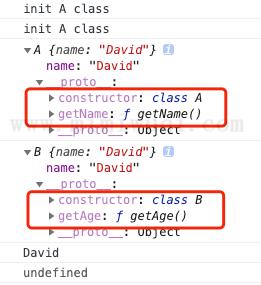1. 前言
上一节我们学习了 Reflect 的使用和一些基本的 API,本节我们将继续学习 Reflect 的一些扩展的 API。
2 Reflect 扩展方法
2.1 Reflect.defineProperty()
Reflect.defineProperty() 方法会直接在一个对象上定义一个新属性,或者修改一个对象的现有属性,基本等同于 Object.defineProperty() 方法,唯一不同是 Object.defineProperty() 返回的是这个对象,Reflect.defineProperty() 返回的是 Boolean 值。
语法:
Reflect.defineProperty(target, propertyKey, attributes)
参数:
- target:目标对象;
- propertyKey:需要定义或修改的属性的名称;
- attributes:需要定义或修改的属性的描述。
如果 target 不是 Object,抛出一个 TypeError。
let obj = {}
Reflect.defineProperty(obj, 'a', {value: 10}) // true
obj.a; // 10
Reflect.defineProperty 方法可以根据返回值检查属性是否被成功定义,而 Object.defineProperty 只能通过 try...catch 去捕获其中的错误,相比之下 Reflect.defineProperty() 方法更加方便。
var obj = {}
var r = Reflect.defineProperty(obj, 'a', {value: 10})
if (r) {
// 成功 todo
} else {
// 失败 todo
}
try {
let obj = {}
Object.defineProperty(obj, 'a', {value: 10})
} catch(e) {
// 如果失败,捕获的异常
}
2.2 Reflect.apply()
**Reflect.apply()** 通过指定的参数列表发起对目标 (target) 函数的调用。
语法:
Reflect.apply(target, thisArgument, argumentsList)
参数:
- target:目标函数。
- thisArgument:target 函数调用时绑定的 this 对象。
- argumentsList:target 函数调用时传入的实参列表,该参数应该是一个类数组的对象。
apply 函数我们都知道,它可以让函数执行并可以改变 this 指向。
const arr = [1, 6, 7, 10, 2, 5]; let max; max = Math.max.apply(null, arr); console.log(max); // 10
Reflect.apply() 方法与上面的代码中 fn.apply(obj, args) 的写法还可以写成 Function.prototype.apply.call(func, thisArg, args) ,Function.prototype.apply.call(fn, obj, args) 这和 Reflect.apply() 的调用时传参是一样的。都是用于绑定 this 对象然后执行给定函数,Reflect 对象则简化这种操作。
max = Function.prototype.apply.call(Math.max, null, arr); console.log(max); // 10 max = Reflect.apply(Math.max, null, arr); console.log(max); // 10
Reflect.apply() 可以接收截取字符串的函数。
let str = 'mybj ES6 lesson'; let newStr; newStr = Reflect.apply(String.prototype.slice, str, [6, 9]); console.log(newStr); // ES6 newStr = str.slice(6, 9); console.log(newStr); // ES6 newStr = String.prototype.slice.apply(str, [6, 9]); console.log(newStr); // ES6
2.3 Reflect.construct(target, args)
Reflect.construct() 和 new 操作符构造函数相似 ,相当于运行 new target(...args) ,提供了一种新的不使用 new 来调用构造函数的方法。
语法:
Reflect.construct(target, argumentsList[, newTarget])
参数:
- target:被运行的目标构造函数;
- argumentsList:类数组,目标构造函数调用时的参数;
- newTarget:(可选)作为新创建对象的原型对象的
constructor属性,默认值为target。
下面的两种实例化的方式是一样的。
function Foo() {
console.log(arguments);
}
var obj = new Foo(...args);
var obj = Reflect.construct(Foo, args);
Reflect.construct() 返回值是以 target 函数为构造函数,如果 newTarget 存在,则为 newTarget 。argumentList 为其初始化参数。
对于有没有传递第三个参数,我们可以这样理解:target 就是唯一的构造函数,但是如果传递了第三个参数,那就表示:我们的实例由两部分组成,实例上绑定在 this 上的属性部分由第一个参数的构造函数生成;不是实例上的属性部分则由第三个参数的构造函数生成。下面我们来看下具体的实例:
class A {
constructor(name) {
console.log('init A class');
this.name = name || 'Jack';
}
getName() {
console.log(this.name);
return this.name;
}
}
class B {
constructor(age) {
console.log('init A class');
this.age = age || 18;
}
getAge() {
console.log(this.age);
return this.age;
}
}
// 使用 A 类作为构造函数
let a = Reflect.construct(A, ['David']);
// 使用 B 类作为构造函数
let b = Reflect.construct(A, ['David'], B);
console.log(a);
console.log(b);
a.getName();
b.getAge();
下图是上面代码的打印结果,创建实例 a 时没有第三个参数,它的原型上的 constructor 指向的是类 A,并且有 getName 方法。创建实例 b 时有第三个参数,打印的结果可以看到实例 b 原型上的 constructor 执行的是类 B,并且有 B 上的 getAge 方法。

3. 小结
本节主要讲解了 Reflect 扩展方法的使用。
